If you build it, he will come
~ Field of dreams
It is April 14th, 2011. In the city of Ghent a group of digital creatives gathers in a bar, to attend the third event in a series of 10 of GentM. This recurring event focuses on the digital trends that affect our daily life in the city. The theme was ‘Open Data’. The vice mayor responsible for ICT took a leap of faith and committed the city of Ghent to start opening up their data, assured by the promise of the creation of apps for the city and a boost for the creative economy.
Today, we can reassess the benefits of Open Data for a local government. So far we noticed that the biggest short term benefits are internal. Using Open Data as a tool to talk about goals, means and co-creation allowed for an extra dimension to audit our organisation and its processes. When you are talking Open Data with other enthusiasts, similar stories arise. How you have to convince departments into opening up their data, how you have to assure them that this will not result in huge cyber attacks or gross misrepresentations of the intended purpose. Yet, beyond these ‘war stories’ there is another underestimated aspect: the Open Data pioneer will be the first person to have an overview of what kind of data the organisation manages and uses.
It was a ranger, Butch. A lone ranger.
~ The Lone Ranger
Starting from this unique position, the Open Data pioneer can spark some processes which will benefit the organisation. The overview of available datasets alone is already very interesting. Studying the meta-data can teach you where datasets are overlapping and thus where there is room for optimisation in the government structure.
In Ghent we noticed that different departments had some form of a list of streets, with different attributes, according to their goal. The environmental department used this to list the trees, the monuments department annotated the list with explanations of the historical figures featured in the street names, the public works department used this to gauge the quality of the roads. Yet, they were working on different versions of the list of streets, each of these versions were less and less used and the quality decreased with the decrease in usage. As an Open Data pioneer, it was my job to create the awareness amongst these services (cfr. figure 2).
This insight (backed up by evidence) started a process where we renewed the efforts towards (master) data management, and we raise the awareness about key referral data. Together with Digipolis , our IT partner, we also want to embed these insights into all future data projects.
On the outside looking in…
How much efficiency can be gained by distributing the data through some form of an internal data management system? No more worries about updates, because everybody can work on the same list and by assigning responsibilities to certain datasets there is a heightened sense of ownership. Furthermore, it contributes to the continuity of data management and avoids sudden gaps of knowledge when a person who manages a certain dataset leaves the organisation. By talking about opening up datasets, the added value beyond the core purpose becomes apparent. Data as a by-product of a process will be re-evaluated, and sometimes redeemed, like the once hidden value of trash before we started recycling
To make this reality, all the efforts to engage the coding community to use your Open Data should also happen within your organisation. At least to raise the awareness of the value of data and the importance of data quality. This is where the feedback loop is key. By showing results of third party developments, preferably in a fancy app, a lot of civil servants see their data used and useful in a way that is previously seen as not possible for a government: “trendy, interactive, mobile or user-friendly”, terms that are not easily associated with governments.
 Open Data, Stad Gent
Open Data, Stad Gent
You are not alone…
For different reasons, the public accessible toilets in Ghent are managed by different departments, each working with their own ‘siloed’ applications. It took some effort to combine those into a printed map of the public toilets in Ghent. Some considerable editorial effort was necessary to clean up the data, so the right parameters could be attributed consistently to the various sources.
This is a great case where open standards and predefined vocabularies are a solution. By implementing the standards in the various ‘mother’ systems, a new, functional and reusable master-dataset emerges, where each department is more aware of what the other is doing, where efforts can be aligned and the ‘map’ is created in a more time-efficient way. This was initiated by the question to add the extra temporary public toilets that are installed for the 10 day Ghent Festival. The program of this massive event is available as Open Data. The various developers asked for extra information to enhance the usefulness of their Open Data based apps. To include the set of public toilets we discovered how data-management can be useful to streamline the interdepartmental cooperation, and yield more efficiency in the preparation of this huge festival.
By applying standardisation to datasets, sharing identifiers and vocabularies managed by different people, their contribution in the data value chain becomes visible. Each can be ‘king in their castle’, without losing synergies.
It’s data Jim, but not as we know it.
~ Star Trek
Talking about data and its usage in processes, adds a new element to the cooperation between government organisations and governments as such. When approached on a data level, we are talking about the essentials. This can defuse some tricky negotiations: it is easier to talk about who is responsible for which column in your spreadsheet, than to determine if your tab sheet is better than the other’s table in a word document.
What we described so far are quite simple cases, where we shared the first insights we gained by opening up basic datasets. These efforts fueled by Open Data resulted in a heightened awareness on different levels about the importance of data quality, but even more about the opportunities to work more efficiently, reduction in IT spending and overall a smarter organisation. If we continue to reach the next maturity levels in our Open Data policy we can take this several steps further: how will a good URI strategy influence our BI environment? How will crowdsourcing influence our feedback loops?
Exciting times are ahead. We need to grow beyond the ‘accidental’ benefits. It should be part of an overall data and information management effort. We will need to attract some data professionals into the government.



Share